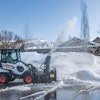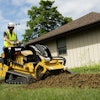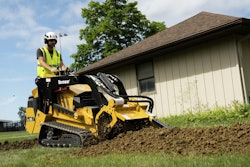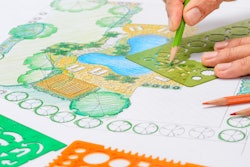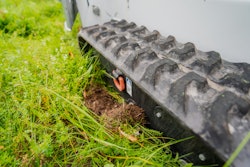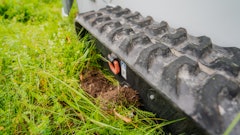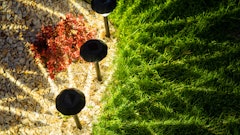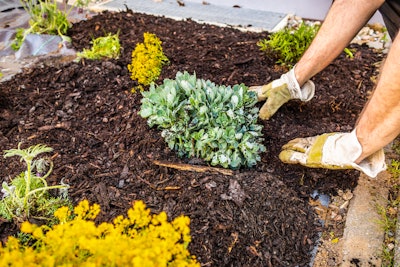
While creativity and artistry remain central to landscape design, today's most successful projects rely on something equally powerful: data. As climate pressures intensify and client expectations evolve, designers who embrace data in their creative process aren't just adapting — they're leading the industry forward.
One of the most exciting evolutions we are witnessing is the digitization of plant information. As growers bring their inventories online and trusted databases from universities, botanical gardens, and other authoritative sources continue to be updated, software platforms can now integrate directly with accurate, living plant data. Designers aren’t just sketching concepts — they’re working with information that ensures their planting plans align with what is available, relevant, and viable in real time.
This connection bridges the studio and supply chain gap, creating a seamless workflow. A design that once required multiple phone calls and manual cross-checking can now be implemented more smoothly, from specification to installation and long-term maintenance — saving time, reducing errors, and enhancing collaboration.
Designers equipped with accurate, science-based plant data can ensure their projects achieve compliance with local guidelines, support ecological resilience, and demonstrate leadership in sustainability.
Why Reliable Plant Data Builds More Resilient Landscapes
Yet, efficiency is only the beginning of the story. The bigger picture is how reliable plant data supports mission-critical goals, such as regional adaptation, biodiversity conservation, and long-term sustainability. These considerations are becoming less optional add-ons and more essential measures of quality and responsibility in the era of climate change.
 Pulling plant information from curated spreadsheets helps firms translate in-house expertise into organized, data-driven planting plans.Vectorworks Inc.
Pulling plant information from curated spreadsheets helps firms translate in-house expertise into organized, data-driven planting plans.Vectorworks Inc.
Designers equipped with accurate, current science-based plant data can ensure their projects achieve compliance with local guidelines, support ecological resilience, and demonstrate leadership in sustainability. From stormwater management to pollinator support, the availability of trusted plant data underpins the ability to create landscapes that thrive well beyond installation day.
More about design on GreenIndustryPros.comKey Elements of Landscape Design: Spatial Planning and Tree Layouts - Check out some of the key elements of landscape design and learn why you should never randomize the placement of trees. Creating Emotion Through Landscape Design, 'Agrihood' - The father/son landscaping company takes pride in its planned use and reuse of spaces. Just take a look at the company's Miralon project in Palm Springs, Calif. What to Know About Implementing Design Software - Design software experts discuss how landscape companies can use design software to their advantage. |
This marks a profound shift in what it means to "design" with plants. Traditionally, a planting plan served as a blueprint for the garden — a detailed guide specifying the location, type, quantity, and spacing of all vegetation to ensure the landscape would be successful and aesthetically pleasing.
Today's advanced planting plans fulfill all these traditional functions while operating as comprehensive datasets. Beyond showing where plants go, these digital plans contain detailed specifications for plant selection criteria, irrigation schedules, mature growth projections, seasonal performance expectations, and long-term maintenance protocols. The plan becomes both an installation blueprint and an ongoing management tool.
That dataset enables every professional in the value chain, including designers, contractors, nurseries, and maintenance crews, to collaborate more effectively. It ensures that what is planted matches what was designed, and that what was intended endures under the site's conditions.
Putting Data to Work in Everyday Design
Software solutions are helping professionals capitalize on this shift by connecting creativity with accurate, detailed plant records. For instance, landscape design software platforms enable designers to access trusted nursery sources, edit plant data in batches, and build plant styles directly from spreadsheets or external databases.
 The Plant Style Manager enables designers to link project data with external resources, including nurseries and plant suppliers, for more accurate and up-to-date plant information.Vectorworks Inc.
The Plant Style Manager enables designers to link project data with external resources, including nurseries and plant suppliers, for more accurate and up-to-date plant information.Vectorworks Inc.
Leaning into this shift is more than staying competitive.
When working on complex projects, designers can filter by growth habit, bloom color, site conditions, or water needs to ensure they’re finding plants that meet aesthetic goals and ecological and functional requirements. The result is a planting palette that balances imagination with reliable science.
Building a Smarter, More Connected Green Industry
As much as planting design will always remain a creative act, the future of resilient landscapes depends on a strong data backbone. Data is quickly becoming the connective tissue — linking nurseries, software platforms, contractors, and long-term stewards into a coherent ecosystem of information.
For green industry professionals, leaning into this shift is more than staying competitive. It’s a way to demonstrate leadership at a time when stewardship, biodiversity, and climate resilience are defining the next generation of great landscapes. As data becomes the backbone of the green industry, those who combine insight with instinct will shape landscapes that endure.

